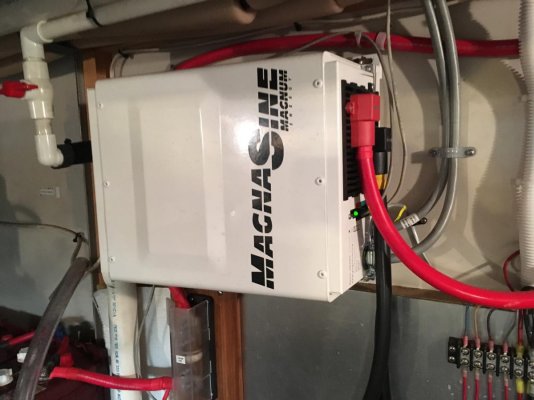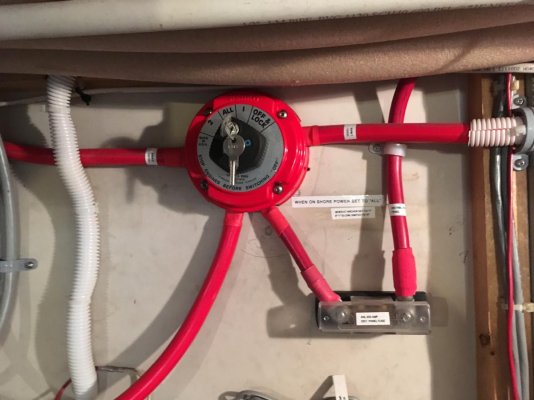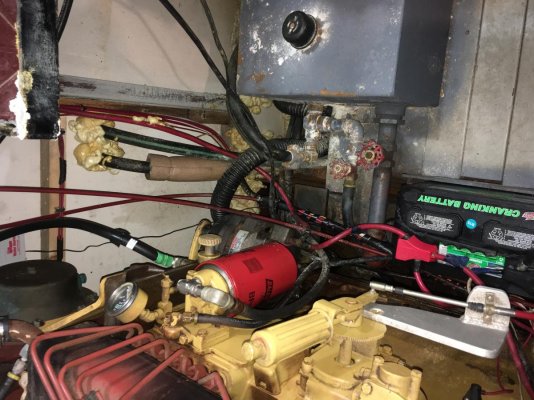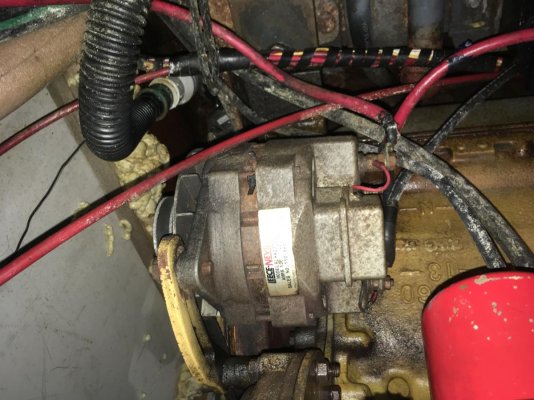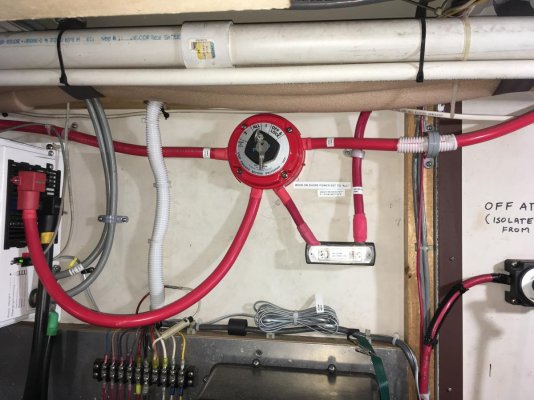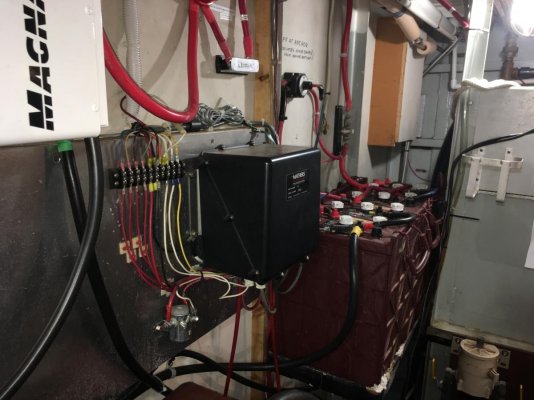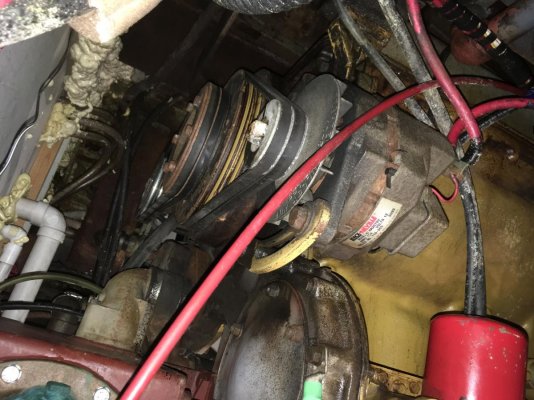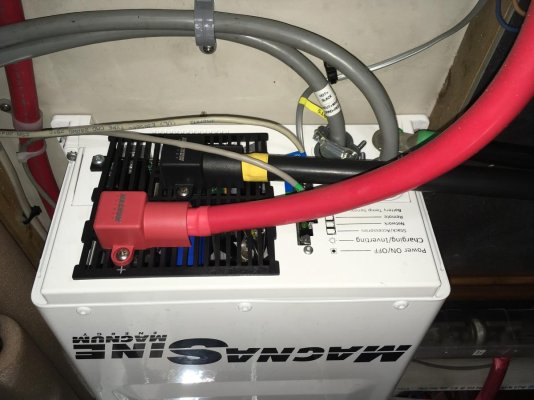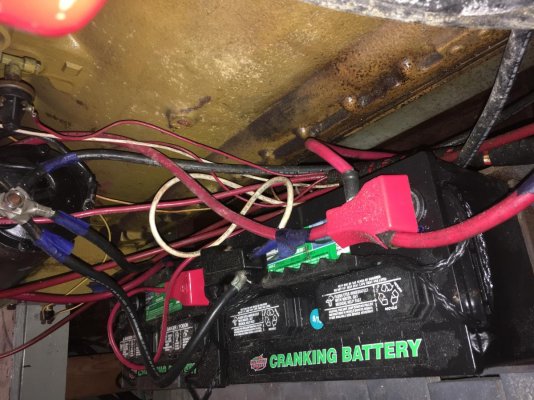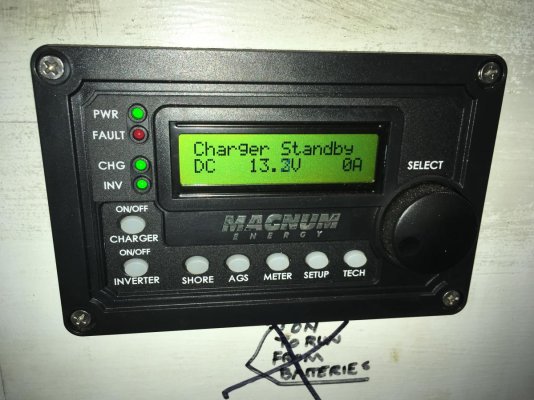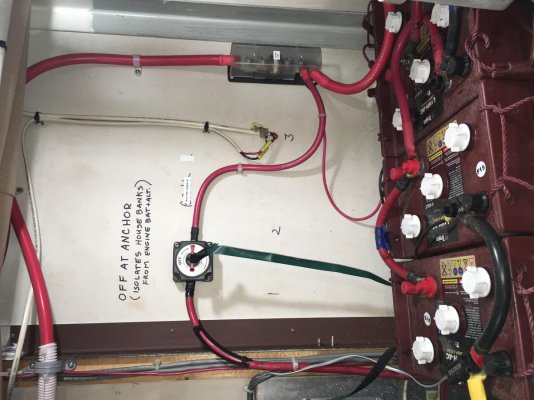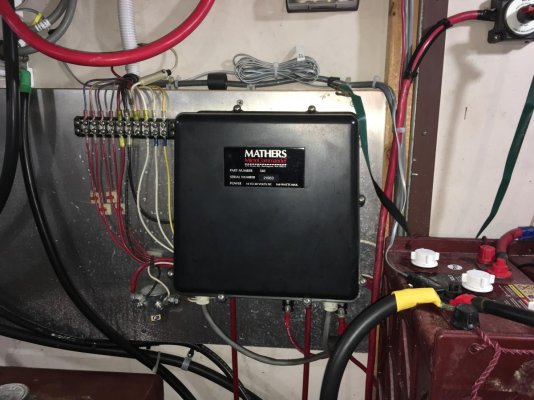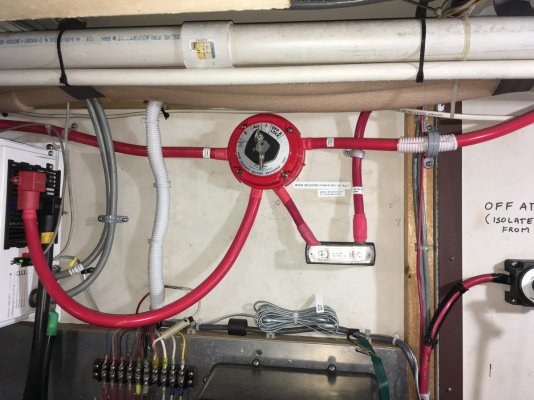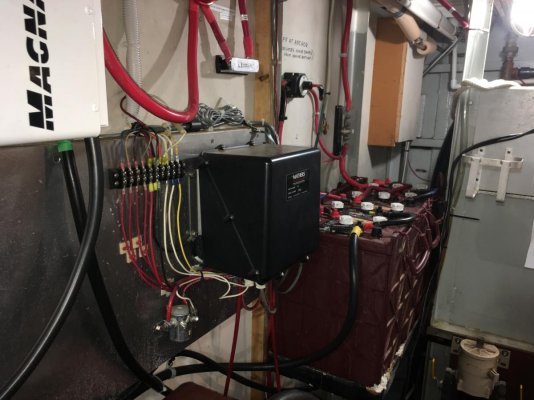LeoKa
Guru
- Joined
- Apr 15, 2017
- Messages
- 1,150
- Location
- USA
- Vessel Name
- Ironsides
- Vessel Make
- 54' Bruce Roberts steel sailboat hull, coastal LRC, 220HP CAT 3306.
I have a CAT 3306 diesel, which includes an alternator 130A/12V, Leece-Neville. It seems that the alternator does not do much. It certainly does not charge the house banks, but now my cranking batteries are loosing voltage, as well.
Any suggestions what to look for here? I am not an electrician, but I can use a voltmeter. Photos are available.
http://www.trawlerforum.com/forums/members/15696-albums751.html
I also have a generator, which suppose to charge the cranking batteries, but that does not seem to charge, either.
The batteries are 3 years old and the water level is regularly checked.
Any suggestions what to look for here? I am not an electrician, but I can use a voltmeter. Photos are available.
http://www.trawlerforum.com/forums/members/15696-albums751.html
I also have a generator, which suppose to charge the cranking batteries, but that does not seem to charge, either.
The batteries are 3 years old and the water level is regularly checked.
Last edited:

